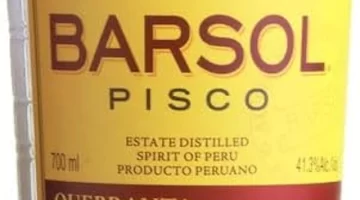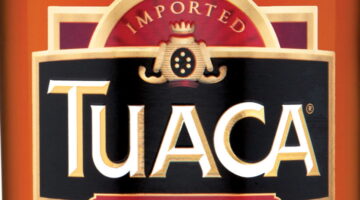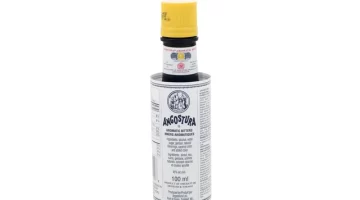Think Twice Before Adding a Slice
Think twice before adding a slice of lemon to your gin and tonic or vodka and tonic, as you might just be dropping cancerous chemicals into your drink.
‘Look at these lovely lemons,’ my wife said, after a trip to the local supermarket. They were indeed beautiful specimens, big and juicy-looking, perfectly-shaped, unblemished, and unwaxed too, so ideal for zesting, slicing and popping into a gin and tonic that evening.
Not Adding Lemon to Our Gin and Tonic
However, by the time the G&T hour had come round, we’d had second thoughts. The lemons may have looked perfect, and not have had any wax put on them, which is done to make the skin look fresher for longer. We also wanted some lemon zest for a plum cake recipe my wife was planning, so they ought to have been ideal. How wrong we were.
We’ve always paid close attention to labels. High-fructose corn syrup? Not buying that. Genetically modified? No, no, and thrice no. But after a recent health scare, we were paying even closer attention to what we were putting into our bodies. And there on the label for this bag of lemons it said: Treated with imazalil, pyrimethanil, e-202.
What is Imazalil?
Before adding a slice of lemon to our G&Ts, or adding its zest to a plum cake, we naturally wanted to know what these three things are. Firstly, imazalil.
One of the tricky things about checking the chemicals that might be in or on your food is that the same thing can have several different names. According to Wikipedia, imazalil is also known as enilconazole and chloramizole, and by brand names including Freshgard, Fungaflor, and Nuzone.
Whichever name it uses, imazalil is a fungicide that is used on fruit and vegetables, and especially on citrus fruits, including our otherwise admirable Spanish lemons bought at Asda. Vets also use it to treat problems like ringworm and athlete’s foot – who knew that animals get athlete’s foot too? However, that doesn’t make it sound like something I want to put a slice of in my gin and tonic.
A study on rodents in 1999 came to the conclusion that imazalil was “likely to be carcinogenic in humans”. In case you don’t know, carcinogenic means having the potential to cause cancer. It should be pointed out that the levels of concentration were so low that the lifetime risk level was deemed to be insignificant. Still, it seems to me to be something you wouldn’t want to be putting into your body at all, given that you may well be ingesting other carcinogenic chemicals at the same time and not know it. California has also described imazalil as “known to the State to cause cancer”.
What is Pyrimethanil?
Pyrimethanil is another fungicide. One study examined the results of exposing the Italian tree frog to pyrimethanil, and concluded:
‘…long term exposure to two environmentally relevant concentrations of pyrimethanil (5 and 50 µg/L) elicits a range of toxic responses. First we showed that pyrimethanil induces underdevelopment of ovaries and interferes with normal sexual differentiation, thus revealing the endocrine disruption potential of this fungicide. Moreover we revealed that all considered organs are seriously affected by this fungicide…’
I know this was the effect it had on Italian tree frogs and not on humans but, you know, I’m not sure I want to take even a slight risk that it might do something harmful to me, too.
The known side-effects from pyrimethanil, according to Pesticides News, are:
‘Contamination from pyrimethanil can be had through inhalation or dermal contact. It is toxic to aquatic life, and is classified as Group C “possible human carcinogen” by the open chemistry database PubChem.
There is no specific review of the side effects of pyrimethanil exposure and contact, but the Toxicology Data Network website gives a general evaluation of the effects of chemical exposure such as irritation to the eyes and skin; respiratory tract discomfort that can worsen into acute lung injury if left untreated; burning sensations to the throat, esophagus and gastrointestinal tract if ingested; and asthma with bronchospasms (wheezing) with chronic exposure.’
I’m starting to go off that gin and tonic.
What is E-202?
The final thing our lemons have been treated with is E-202. This is the E number for potassium sorbate, which doesn’t sound to me like a yummy addition to a cocktail. Its use is to prevent molds and yeasts growing on foods and in drinks, and to increase their shelf-life. If not diluted, it’s known to be a skin, eye, and respiratory irritant, but in food production it obviously is diluted down to safe levels. Three studies on rats have been done and E-202 was not found to have any carcinogenic effects. Phew. It’s the least worst of the three things our lemons had been treated with.
Cleaning Fruit and Vegetables
All fruit and veg, even organic produce, needs cleaning before consuming. A thorough wash in slightly salty water should remove most of any residue on the skin. You can also soak them in vinegar and water, or clean them with bicarbonate of soda, and then wash them afterwards.
In the end, instead of having to soak a lemon in vinegar or salty water, we decided it was easier and safer to forego our usual ice and a slice, and instead juice the lemons and only use the juice. And wash our hands thoroughly after handling the lemons. We left lemon zest out of the plum cake recipe, and used lemon juice instead.
But my, what a faff to go through just to make sure you’re not potentially harming yourself. Who wants to go through that every time you fancy a gin and tonic? And most lemons in the stores don’t even have detailed labelling like that.
I also know that from now on, if I’m in a bar or on a plane, and I’m asked ‘Do you want ice and lemon with that?’ the answer is going to be no.















